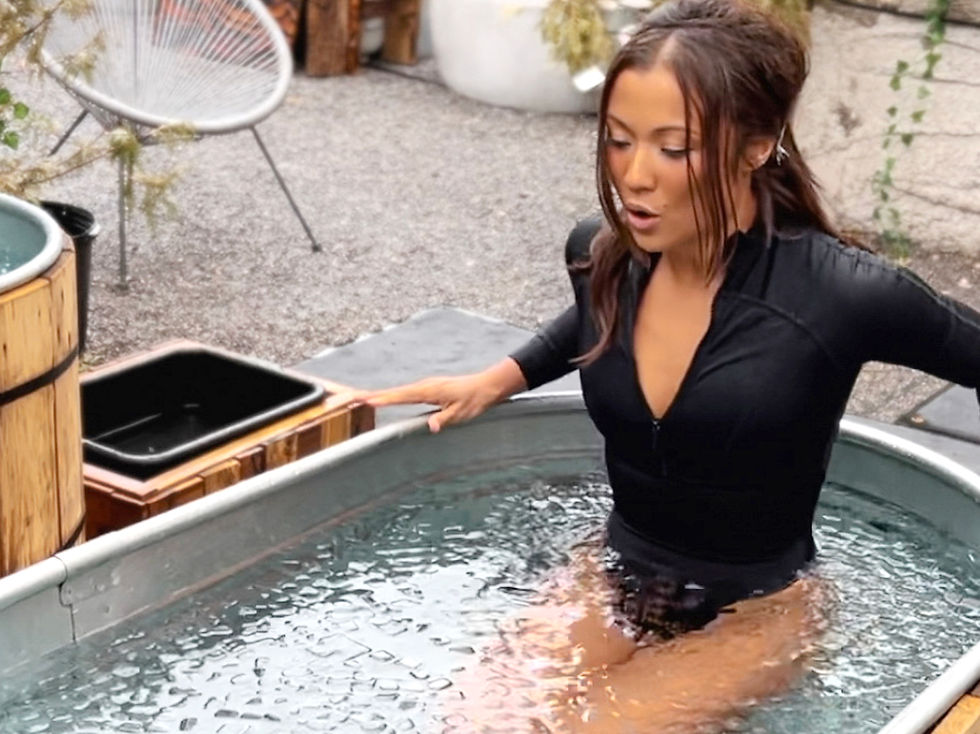How Long Should You Cold Plunge?
- Active Aqua

- Jul 24
- 3 min read
Because “just until you can’t take it” is not a training plan.
You’re standing at the edge of the plunge tub. The water’s sitting somewhere around 49 degrees Fahrenheit. You’ve done the prep, maybe even taken a few cold showers to warm up to it (so to speak). But now you’re wondering: how long am I supposed to stay in here?
One minute? Five? Until I can’t feel my face?
It’s a simple question. But like most things in health and wellness, the answer depends on your goals, and your tolerance. This guide is here to help you make sense of it all, using a mix of research, real-world experience, and a bit of common sense.
There’s No Gold Medal for Suffering
Let’s start here: cold plunging is not a test of how much misery you can endure. It’s a tool. Used correctly, it trains your nervous system, improves recovery, and enhances mental clarity. Used poorly, it becomes a recipe for burnout, injury, or just plain dread.
So instead of chasing some mythical “ideal” time, the better question is: what do I want out of this?
Are you plunging for recovery after workouts? Stress resilience? Better sleep?
Dopamine and mood regulation? Each of those goals has a different threshold, and the science gives us a decent roadmap.
What Research Tells Us
Most studies on cold exposure fall in the 45°F to 59°F range. That’s the “therapeutic zone,” where cold triggers physiological changes like norepinephrine release, vasoconstriction, and anti-inflammatory responses.
In terms of time, research suggests benefits kick in at around 2 to 11 minutes, depending on water temp and your baseline tolerance. Some studies even use 3-minute immersions as a standard for improved mood and nervous system regulation.
If that sounds vague, it's because it is. Cold adaptation is personal. And most of the hard data comes from elite athletes or small lab studies - not your average person in their garage plunge.
Let’s make it practical.
Find Your Zone: A Practical Framework
If you’re a beginner...
Start at 65–60°F for 1–2 minutes, 2 to 3 times a week. Focus on breathing, not on the clock. Your only job is to stay calm. If your shoulders are hunching and your breath is shallow, it’s time to get out.
Intermediate (a few weeks in)...
Drop to 60-55°F for 3–5 minutes, 3 to 5 times a week. You’ll start to notice post-plunge benefits: better sleep, more stable mood, faster recovery. It starts to feel... good. Weirdly good.
Advanced (daily plungers)...
If you’ve been consistent for a month or more, you might drop into the 55–49°F range for 5–10 minutes. Some folks go longer, but more isn’t always better. After 10 minutes, the marginal gains shrink and the risks (cold injury, overexposure) grow.
Know When to Get Out
Forget what the influencers are doing. Listen to your body. Shivering after the plunge is normal; that’s your body heating itself back up. Shivering in the plunge means you’ve probably pushed too far.
Same goes for numbness, dizziness, or cloudy thinking. That’s not toughness. That’s your body saying “enough.”
If you're asking yourself "Can I stay longer?" and the answer is driven by ego instead of breath control, get out.
Recovery vs. Resilience: Different Goals, Different Durations
If your main focus is muscle recovery, shorter plunges right after a workout (3–5 min) can help reduce soreness and inflammation.
If you’re using cold for mental resilience or stress adaptation, you might focus more on breath control and comfort at lower temperatures, even with shorter durations.
And if you're doing cold exposure to help with sleep, many people find that 2–3 minutes in the early evening (not right before bed) can help downshift the nervous system.
Final Thought: Consistency Beats Duration
Here’s the secret: 2 minutes, done consistently, will do more for you than 10-minute plunges done once a month. Adaptation happens with repetition, not punishment.
Instead of asking “how long should I stay in,” try asking: “How calmly can I stay in today?”
That shift in mindset changes the whole experience - from something you endure to something you build.
When You’re Ready to Get Consistent…
A reliable chiller is everything. No ice runs. No guesswork. Just a precise, dialed-in setup that keeps your water cold, clean, and ready every day.
Active Aqua chillers are the go-to solution for DIY cold plungers across the country. They’re durable, affordable, and designed to work right out of the box.
Looking to get started?
Explore the full line of Active Aqua chillers and find the perfect fit for your DIY cold plunge today.




